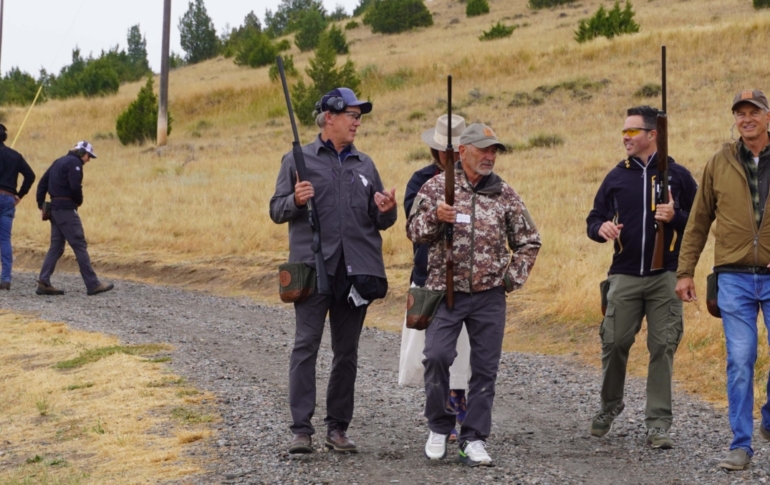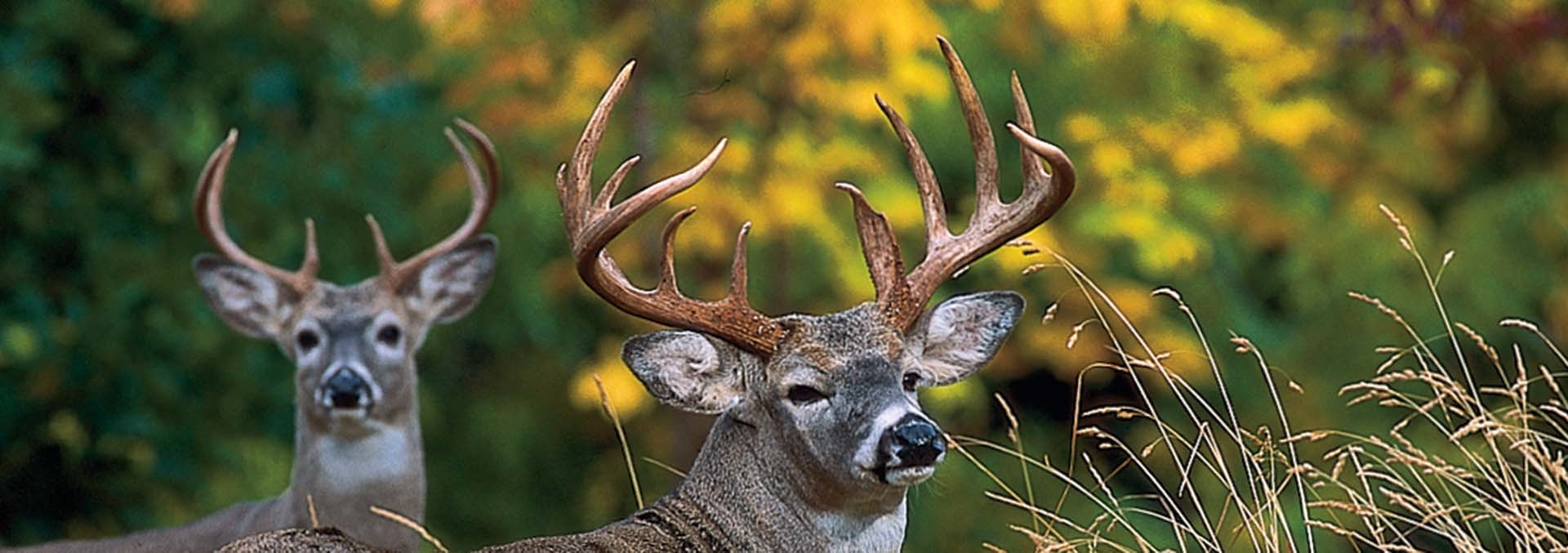White-Tailed Deer Management
By Mark Matthews, Partner/Broker Associate, Republic Ranches
If white-tailed deer are important to you as a landowner, read on as I share a few thoughts and opinions from my nearly forty years of deer management experience. Thirty-nine years ago, while on a hunt with my new best friend and a business partner, I became interested in white-tailed deer management. He and his family had implemented a management program on their newly purchased South Texas ranch. The program consisted of an annual deer survey, harvesting does, shooting spikes, planting Illinois bundle flower, and weighing and aging harvested deer. A relatively new concept was to keep the herd at carrying capacity utilizing doe permits and limiting the harvest of bucks, except spikes and “culls.” The rule of the day was one deer to 25 acres, and two does per buck. This hands-on introduction to the management side of white-tailed deer sparked an intense interest in learning more, and I enrolled in a graduate program in wildlife management at Texas A&M University in 1986. About this time some of us in the whitetail world had started to question the accepted management practices and had become interested in trying to understand how genetics, population dynamics, supplemental feeding, and other factors impact things. My business partner received what was then called a scientific breeder permit from the Texas Parks and Wildlife Department, and we began raising deer and doing private research to see where it led. Talk about on-the-job training! It was a new frontier, and we had no idea what we were doing, with limited resources for help.
White-tailed deer management has evolved a lot. The continuum of management has impacted both extensive and intensive deer management programs alike. Techniques and information including lots of research, high fencing, supplemental feeding, census counts, trail camera usage, selective harvest and removal, genetic introductions and stockings, brush management, and other tools have been developed to enhance whitetail populations on a given property to better meet the objectives of the owner.
Today’s white-tailed deer manager has many strategies to help the landowner achieve his or her goals. Which tools are utilized depends on one’s goals, property, habitat, budget, and ethics; however, the single most important aspect is to establish and define realistic goals. The number one reason landowners fail at white-tailed deer management is that they do not establish clear and realistic goals, resulting in management programs failing to meet objectives.
Start with the basics. It is as simple as saying: “I want to harvest “x” number of mature bucks of “y” quality annually within “z” number of years.” That’s it! Write it down before you ever start. Landowners must be certain their goals are specific and realistic for the property they own and for the hunting they desire to do.
1.) Evaluate your property and determine if you can accomplish your goals with what you own or are looking at buying. Habitat, ecoregion, size, water, soil, and neighbors, are all limiting factors to white-tailed deer management. Do you have the money and time to accomplish your goals? It’s going to cost more and take more time and effort than you think! Be realistic and enjoy getting there.
2.) How do you like to deer hunt? The style of hunting you want to establish is another important factor. Some want to hunt a low fence property with a recurve bow. Some don’t want to spend more than one hour in a blind and expect to harvest a 200” buck every year. Some attempt to harvest multiple trophies each year while having a natural feel to the hunt. Hunting style has a big influence on which management practices you follow and what type of property you purchase.
In today’s world of instant gratification and maxed-out schedules, many managers choose to use tools and techniques that provide for a quicker return on investment; however, there are important considerations to take into account should one choose to go that route. For the landowner whose goals are to start hunting trophy bucks right away, buying stocker or shoot-er bucks might be an option.
 When taking this route one needs to be aware of several issues:
When taking this route one needs to be aware of several issues:
- Property sizes tend to be smaller due to the need to harvest animals in shorter time frames.
- Special permits are required in most states to purchase and transport the deer.
- Death loss of purchased bucks will be a factor. You will need to purchase at least 30% more animals than you intend on harvesting.
- “Put and take” hunting ranches are the most controversial hunting scenarios in both the hunting and non-hunting communities. Making the hunts feel “natural” is a challenge.
- Lastly, be aware of drugs used in the delivery process. Some of the drugs used may take time to metabolize from the deer’s carcass and may be harmful to humans if consumed.
Should a landowner be willing to spend the time and desire to establish a more primitive, free-range, and natural hunting ranch then habitat, water, eco-region, soils, neighbors, and size are the most important factors. White-tailed deer are present in many different eco-regions, but not all areas are equal in naturally occurring quality. Ecoregions that white-tailed deer inhabit can have populations that range from one deer per 40 acres (or more) to two deer per acre. Trophy quality varies from region to region as well. Carrying capacity, the ability of a certain piece of property to sustain a healthy deer population, limits the density and composition of a white-tailed deer herd. Habitat and water management can be improved to increase deer densities in the most extensively managed situations.
For example, one thousand acres in an area that has a carrying capacity of one deer per 20 acres will have a target population of 50 white-tailed deer. Having a goal of two does per buck and a reproductive rate of 35% will result in a population of 13 bucks, 26 does, and nine fawns (more on what this means below). Neighbors and their hunting practices will affect your deer herd as well. In a low-fenced environment, neighbors that do not hunt may cause you to harvest more deer. Neighbors that harvest more deer and/or younger bucks will limit your ability to harvest mature bucks. Get to know your neighbors. Attempt to establish a cooperative management strategy.
The two management styles discussed above are on the opposite ends of the spectrum. Landowners who wish to utilize more aggressive and intensive management practices while attempting to maintain a natural hunt have many options as well. Supplemental feed, water enhancement, game fences, and genetic manipulation are among the more commonly utilized to whatever degree a landowner is comfortable.
As I ponder this broad spectrum and evolution of deer management and deer hunting styles, I often ask myself what were some of the drivers aside from simple human nature? Years ago, a relatively small portion of white-tailed deer country produced the trophy bucks. Further (in private land areas), it was mostly limited to larger holdings of land with limited access. As a result, the deer management community began to explore the possibility of managing trophy white-tailed deer on smaller tracts.
Following up on my earlier example, in an ecoregion that has a natural carrying capacity of one deer per 20 acres and a region that is known for producing trophies, a minimum of 10,000 acres would be needed to regularly produce a trophy buck. A trophy is defined here as a buck scoring 175” B&C or more. Our observations and historic data have shown us that only an estimated 1.5% of buck fawns will be 175” B&C or greater at maturity in a “non-manipulated” white-tailed deer herd. Other assumptions would be a 50% reproductive rate, the density of 1 deer per 20 acres, and a 1:2 buck/doe ratio.
With modern techniques and tools, managers can decrease the necessary acreage needed to produce trophy white-tailed deer while maintaining a more natural feeling hunt. High fencing allows landowners to ensure younger bucks are not harvested and for the stocking of superior quality deer. The supplemental feed allows for higher densities, increased reproductive rates, higher percentages of buck fawns growing into trophy bucks, and decreased death loss due to poor nutrition. Education is another key factor in modern deer management. The ability to age deer on the
“hoof” with accuracy results in deer being harvested at desired ages. Game cameras and video cameras are also helpful for managers to make decisions and educate hunters.
In the same ecoregion as described before, a manager utilizing modern management techniques would be able to produce a substantially greater number of trophies on the same acreage. Reproductive rates and densities would be higher. The percentage of buck fawns that grow into trophies at maturity could be four to five times higher.
If white-tailed deer are an important factor when buying a ranch, establish your goals before you start your search. Location, size, habitat, water, and neighbors will all have an effect on where you look. Hire a broker that has expertise in deer management and can help evaluate properties you are interested in. Buying a ranch is expensive. Hoping you have purchased the right property is simply too risky.

Joette Schalla, ALC, Land Broker of the Year by Colorado RLI Chapter
Fay Ranches is proud to recognize the outstanding achievement of our own Joette Schalla, ALC, who has been named Land Broker of the Year by the Colorado Chapter of the REALTORS® Land Institute. This prestigious award highlights the exceptional professionals in the land industry who demonstrate expertise, leadership, and an unwavering commitment to their clients […]

Breaking Clays, Building Futures: Fay Ranches at the First Annual FRCF Clay Shoot
On August 27th, the Fay Rural Community Foundation (FRCF) hosted its first annual Clay Shoot, bringing together 66 participants across 17 teams for a day of sport, camaraderie, and purpose. Despite the rainy weather, the event raised more than $24,000 to support rural communities. For Fay Ranches, this event was more than a fundraiser. Our […]



